
Lifting as I climb has always been one of my core intentions as an emerging artist. I have poured into other creatives by highlighting their work, providing mentorship, sharing resources, and helping them get paid work. In a time when technology, money-hungry gatekeepers, and constantly shifting creative industries devalue artists, this work is vital for sustaining ecosystems that allow us to thrive. However, ecosystems cannot be built alone; they are created and upheld through an interdependent community in which each organism has a specific role. I previously talked about how pouring from an empty cup led me to make the difficult decision to shut down a media platform I built for BIPOC creatives. In the years since shutting down, I have worked on learning how to show up in more sustainable ways.
The Journey of a Multi-Hyphenated Misfit
I really appreciate all of the love I’ve gotten on this platform in the past few months. This newsletter has provided space for me to write about some of my significant wins and also be honest about how I’m grieving my deferred dreams and examining what drives my desire for excellence
"Can I pick your brain?" is a question people often ask me. In the early days of my advocacy of BIPOC artists, I was happy to have my brain picked, even eager to do so. In most instances where I allowed my brain to be picked, the askers did not have clear intentions about why they were engaging with my brain. I was simply someone who accomplished something they wanted to but had no idea how to go about it. I started to reflect on the implications of being asked this question and what exactly people thought it was they were picking. It became clear that some of the strides I have made led people to perceive me as someone with advanced knowledge on how to carve out a creative journey or execute a vision, even though I have not yet reached the stage of fully thriving as an artist.
Navigating a career in the arts has been a profoundly personal and unguided experience full of bumps along the road, growing pains, a lot of work, and sometimes very little support. Picking my brain is not simply asking me questions or seeking my guidance; it is a way in which people mine knowledge that I have spent a great deal of time and energy building, unaided. There is also the reality of being a Black woman who is asked to help more than I am offered help, which is difficult to reconcile as someone who genuinely wants to help but is barely making it on their own. I never want to be the person who thinks that just because I have struggled, other people should too, but I do want to lean into a form of advocacy that empowers people to learn how to help themselves. As independent artists, your most significant assets are resourcefulness, drive, determination, and interpersonal communication skills. So, while my brain is not pickable these days, I wanted to share some things I've learned on my journey that will hopefully provide insights that empower people on theirs.
GETTING STARTED
So, you've decided to try out a specific medium, but you need help figuring out where to start. It's natural for people to seek guidance from people who have already done the work they're interested in, but I would like to challenge you to consult yourself first. I can't speak for all artists, but my instincts drive my work. Developing a solid connection to your instincts is the best way to discover your unique artistic voice and expression. Strong instincts are integral to building confidence in your craft and clarity for your vision. This is not to say that you should never seek advice or guidance from others. I am a student of my craft and frequently take workshops, read books, and tap into other learning modes. However, when exploring a new medium, I like to dive in and try it before seeking outside counsel. For example, I wrote my first screenplay in Microsoft Word (LOL), taught myself how to DJ with a controller, and experimented with making songs in Garageband before receiving formal music training. The liberating thing about trying something out for the first time is that it doesn't have to be good and often won't be. Think of it as a test drive or getting your feet wet.
Observe how it feels to create in this space. Does it provide you with a release? Is it allowing you to forget about the world around you? What curiosities does it engage? How would you like to expand your expression within the medium? When you start from this space, it allows you to seek out guidance specific to what you're trying to execute versus overloading yourself with information that is not necessarily tailored to what you're trying to do in your current state of exploration. You don't have to be an expert to be an artist, you just have to create art.
SEEKING COLLABORATORS
Most art forms require collaboration, and I would even argue that collaboration is an art form itself. Many people think mutual admiration of one another's work is the baseline for a collaboration, but finding synergy with collaborators takes a few extra steps. Some core traits that will help you find collaborators are consideration and intention. Consideration requires understanding where a creative is in their journey and the alignment between your artistic voices and goals. Intention gives all parties a clearly defined goal to work towards together. There have been many instances where someone has asked to collaborate with me in a way that is not aligned with my goals or interests. For example, many people have asked me to produce their projects. I produce to pay my bills. It is my occupation, not my vocation, and it is a stressful and laborious job, so doing it for free on someone else's project is of little benefit to me. In these cases, it's less of a collaboration and more of a request for free labor.
One thing that helps me select collaborators (specifically if it is a project that requires a significant time commitment) is having a list of thoughtful questions to ask when discussing the possibility of collaborating. What are you passionate about? What are your strengths? What areas are you trying to grow in? What are your goals? What is your working style? I saw you worked on [insert name of similar project], what are some things you learned that you would apply to this project? Under what terms and conditions can you commit to working on this project together? I also assess if we have a similar experience level because a big experience gap often results in one person playing more of a mentorship role, which can feel less symbiotic. Asking these questions sounds a bit like a job interview because, on some level, it is. Your art is your business, even if you're not driven by money or paid to create. These questions are especially important when an artist is not getting paid. While in pre-production for my short film, I e-mailed everyone who expressed interest in volunteering on the project and outlined the specific roles I needed to fill. This allowed everyone to choose how they wanted to show up. For some people, it enabled them to gain on-set skills that they would not have had the chance to learn in a professional setting. If I had just delegated people to whatever roles I saw fit without considering these things, it would not have provided any real value to them. With all of this said you can never 100% guarantee that a collaboration with another person will go well. The best you can do is show up with intention, consideration, and mutual respect and take whatever you learn to the next project.
BUILDING A NETWORK
Building a supportive, creative network is vital for any artist. The often-quoted Issa Rae interview, where she talks about lateral networking versus trying to network up, is sage advice, but figuring out how to network can be mystifying for many people. If networking triggers your social anxiety, you're not alone. I'm an introvert, and networking always feels awkward, but I'm learning that it's a skill that can improve over time. Digital networking has been very fruitful for me. There is an abundance of digital communities and non-profits for filmmakers, including Hue You Know, Media Mavens, Brown Girl Doc Mafia, The Gotham, PANO, and Black Film Space. I've found these networks via Google searches, scouring Facebook Groups, and word-of-mouth. I've met collaborators, taken workshops, and attended digital and IRL events through these organizations. I cast a pretty wide net when participating in digital communities. If you're not a filmmaker and looking for digital communities, I suggest you do a deep dive on Google and Facebook and search for communities specific to your identity and artistic niche.
Once you've started to meet people, build some rapport. Grab a coffee, have a Zoom meeting, stay in touch on socials, support their work, share job opportunities and artist programs you see that are aligned with their goals, mention their name in rooms, start a writer's group, and do whatever is necessary to pour into one another. The value of a network is not just in potential career opportunities or collaborations. It also sustains your artistry through moral support and feedback on your work. Which brings me to…
SEEKING ADVICE AND FEEDBACK
So, you've been finding your groove but are stuck and need someone's advice or feedback on your work. When it comes to advice, much of the same is true about seeking collaborators: you need to employ consideration and intention. As I mentioned, asking to pick someone's brain tends to lack specificity. I understand that everyone learns differently, and asking someone a direct question may be an easier option, but having the discernment to know if what you want to ask requires insight from a human being versus information readily available via a quick Google search considers people's time, energy, and mental resources. Being willing to do some of that work yourself before asking someone else will set you on a path of being more resourceful and building stronger instincts. This way, the questions you ask will be for clarifying or enhancing the information you have already sought out yourself.
Specificity also applies to asking for feedback on your work. Being in writer's groups has helped me learn what specific questions to ask about the areas of a script I'm stuck on or to get a better idea of how the reader perceives the story. Walking into a feedback session with a clear idea about what I'm trying to convey also helps my peers provide more useful advice than seeking general opinions about the work. Advice and feedback will always be subjective, and learning the delicate balance of taking the feedback I need and leaving the rest has built my confidence as a writer. There is no right or wrong answer to how to approach your art. If you receive feedback or advice from people but still feel lost, this doesn't always mean you need more external guidance. Sometimes, it's a sign to take a break before returning to the work. Toni Morrison once said1:
"When I sit down in order to write, sometimes it's there; sometimes it's not. But that doesn't bother me anymore. I tell my students there is such a thing as "writer's block," and they should respect it. You shouldn't write through it. It's blocked because it ought to be blocked, because you haven't got it right now. All the frustration and nuttiness that comes from "Oh, my God, I cannot write now" should be displaced. It's just a message to you saying, "That's right, you can't write now, so don't."
Heeding this advice has been incredibly liberating when facing the inevitable ebbs and flows of my artistic output.
RESEARCH AS A PRACTICE
Studying and research are core aspects of honing a craft. Those who have witnessed how I approach my craft will tell you I am very studious. I love falling down rabbit holes learning about writing, directing, and the journey of artists who have inspired me. I get excited about taking workshops and courses that expand my skills. This trait has helped me work through learning curves, enhance my artistic expression, and speak the language of collaborators who operate in different mediums. For example, I took some lighting and cinematography workshops earlier this year that helped me better understand how to communicate my ideas to DPs and Gaffers. There is nothing in my artistic field I cannot at least attempt to learn. The worst thing I can do is try it out and fail and then defer to the experts, who I now understand better, which improves our working relationship. In general, meeting tasks that seem daunting with curiosity instead of fear yields more growth. Not every aspect of artistry will be effortless or fun, but learning is just as much a part of the craft as expression. Centering research in your artistic practice will make you more well-rounded and increase your capacity to be an agile creative problem-solver, especially if you have big ideas and few resources.
PUTTING YOUR WORK INTO THE WORLD
You've done it! You've built the community, put in the work, and finished a piece of work ready for the world to see. Take some time to celebrate yourself and what you've accomplished before moving on to the next thing (something I’m trying to get better at). It was no small feat, but you did it, and now it's up! Now, the question is how do you put your art into the world and where? The answer to this will be specific to your medium, where in the world you are located, and your goals. Take everything you've learned about researching, networking, building a community, and seeking collaborators, and build a strategy unique to your goals. Are there emerging artists in your network who have showcased work in your medium? Stalk their websites and socials, and create a list of the publications that have featured their work, festivals that have screened their films, and artist programs they have gotten into. Craft a press release, shoot your shot, dive deep, cast wide.
MANAGING YOUR EGO
If you haven't had to reckon with your ego while receiving feedback on your work, you will definitely begin to navigate it once it is out in the world. Not knowing how your work will be received and the possibility of rejection can make putting your work into the world terrifying, so terrifying in fact that many people would rather hide their talents than risk facing these fears— but baby, that's all ego. Here's the thing: not everybody will like what you do, but it is not a measure of your talent or your potential. The true value of art is determined by the person who creates it and the people whom it serves. Your work may not go viral or receive accolades, but try not to focus on that. Instead, focus on the feedback you receive from people who resonate with it. Talking to men who watched my film One of The Guys and hearing them say it challenged them to think about their relationship with toxic masculinity or their ideas about r*pe culture was incredibly affirming for me because it showed me that the intention behind my work was properly executed. How you respond to external validation or lack thereof fortifies your ability to endure the inevitable rejection that comes with putting your work out into the world. If you are struggling with rejection, read the story of any legendary artist you admire, and I guarantee you will find an instance in which they experienced rejection, too. Rejection is just as much a part of the process as praise. Try not to get too attached to either.
Dear Rejection
LaChelle Rising is a reader-supported publication. To receive new posts and support my work, consider becoming a free or paid subscriber. If you have commitment issues, consider buying me a taco. Dear Rejection, I’ve started and abandoned countless drafts of this letter, trying to ensure the language I use lan…
Confronting your ego can also happen before you put your art into the world. "Kill your darlings" is a phrase used in the literary world that encourages writers to remove parts of their writing they love that don't serve their story. This can apply to any medium and reflects how ego attaches itself to your creative process. Ego tells you, "The prose in this sentence is so good, it must stay in the story," "This melody is so pleasant, I have to keep it in the song," "This scene was so well composed, it must stay in the final edit." As deeply personal the creative work we do may be to us, it's essential to build a healthy detachment from it to assess when you're holding onto a shiny object that doesn't adequately express what you're aiming for. Killing your darlings requires the courage to detach yourself from something you created and trust that doing so creates more space to make something that will exceed your expectations.
BE YOUR OWN BLUEPRINT
Just like creating a healthy detachment to your creative ideas is essential, it's equally important to do the same with the journeys of creatives we admire. I've heard many people say, "[insert name of famous artist] is my blueprint." While there is nothing wrong with being inspired by others, it discounts the power of carving out a path specific to your talents, resources, connections, and insights. Someone else's path may not be helpful for you to follow anymore because the landscape for artists is constantly shifting. Following blueprints prioritizes the destination over the journey. It limits the realm of possibility of what you can accomplish. Artistic journeys are like fingerprints; no two are the same; they are part of your identity. Remaining open and adaptable while walking down an uncertain path can lead you to accomplish more than you could've imagined.
I have learned many things in the past 10+ years of putting work into the world, and I have much more to learn and create. I haven't "made it" as an artist, and I don't have it all figured out. If I focused on that, I probably would've given up a long time ago because this shit is hard AF. Passion and curiosity have fueled me through this journey, and it will do the same for you as long as you continue to feed it. I hope my insights can be a jumping-off point for you to take what you need and discover the rest. You got this, and I am rooting for you!
Catch me on these digital streets.
Watch My Short Film “One Of The Guys” 🎥
Instagram 🤳🏾
TikTok ⏰
Website 👩🏾💻
Merch 🛍️
💋 ✌🏾
With love,
LaChelle
From her interview in Black Women Writer’s At Work edited by Claudia Tate.



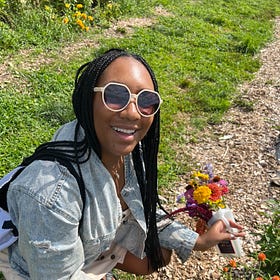
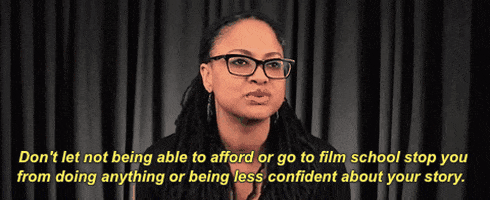
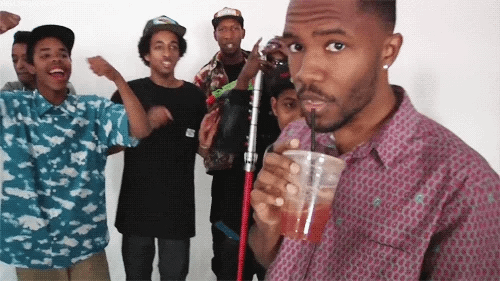
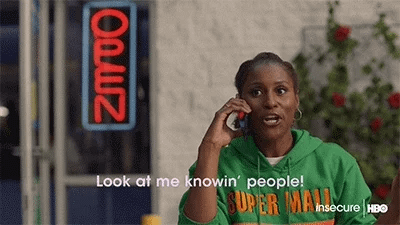




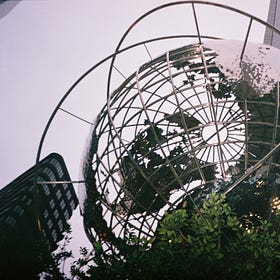

“There is also the reality of being a Black woman who is asked to help more than I am offered help, which is difficult to reconcile as someone who genuinely wants to help but is barely making it on their own.”
WHEW, I felt this!! Often times when people approach me to “pick my brain”, it feels more like they’re trying to consume me. Like you mentioned, I think people would benefit from remembering that collaboration also means being in alignment, and being in alignment means seriously considering what you can offer the other person in addition to receiving from them. It’s not an all-you-can-eat buffet where food continuously refills itself for your consumption.